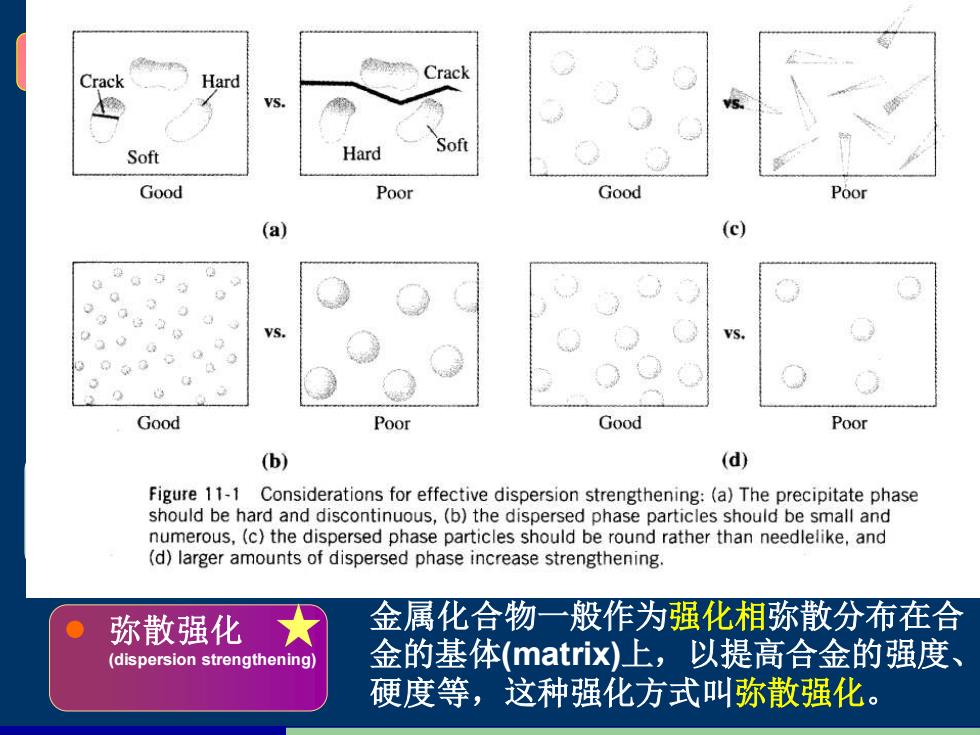正在加载图片...

Crack Crack Hard VS. Soft Soft Hard Good Poor Good Poor (a) (c) 50 VS. VS. 0 Good Poor Good Poor (b) (d) Figure 11-1 Considerations for effective dispersion strengthening:(a)The precipitate phase should be hard and discontinuous,(b)the dispersed phase particles should be small and numerous,(c)the dispersed phase particles should be round rather than needlelike,and (d)larger amounts of dispersed phase increase strengthening. 弥散强化★ 金属化合物一般作为强化相弥散分布在合 (dispersion strengthening) 金的基体(matrix)上,以提高合金的强度、 硬度等,这种强化方式叫弥散强化。2 金属化合物 1.1.2 合金的晶体结构 P23 间隙化合物 尺寸大的过渡族金属元素原子占据晶格 的结点位置, H、B、C、N等原子半径 较小的非金属元素原子有规则地嵌入晶 格的间隙中形成的化合物。分为间隙相 和复杂结构的间隙化合物两种。 当非金属元素原子半径与金属元素原 子半径之比大于0.59时,形成具有复 杂结构的间隙化合物。Fe3C 当非金属元素原子半径与金属元素原 子半径之比小于0.59时,形成具有简 单晶格的间隙化合物。VC 金属化合物一般作为强化相弥散分布在合 金的基体(matrix)上,以提高合金的强度、 硬度等,这种强化方式叫弥散强化。 弥散强化 (dispersion strengthening) 间隙相和间隙固溶体区别? V VC